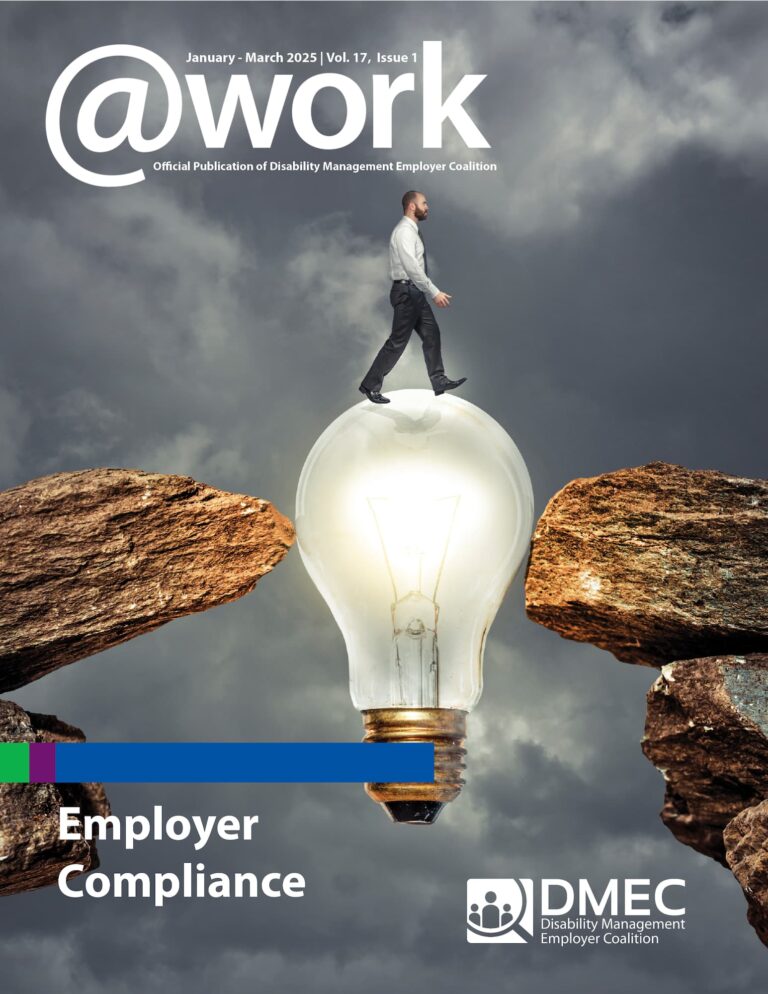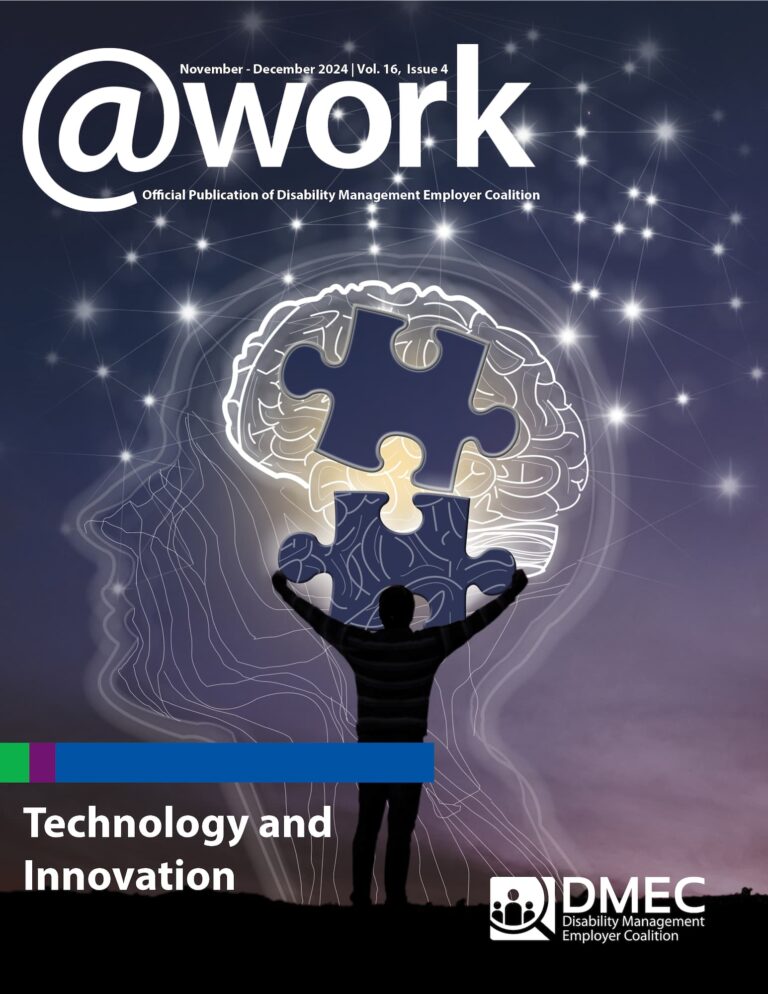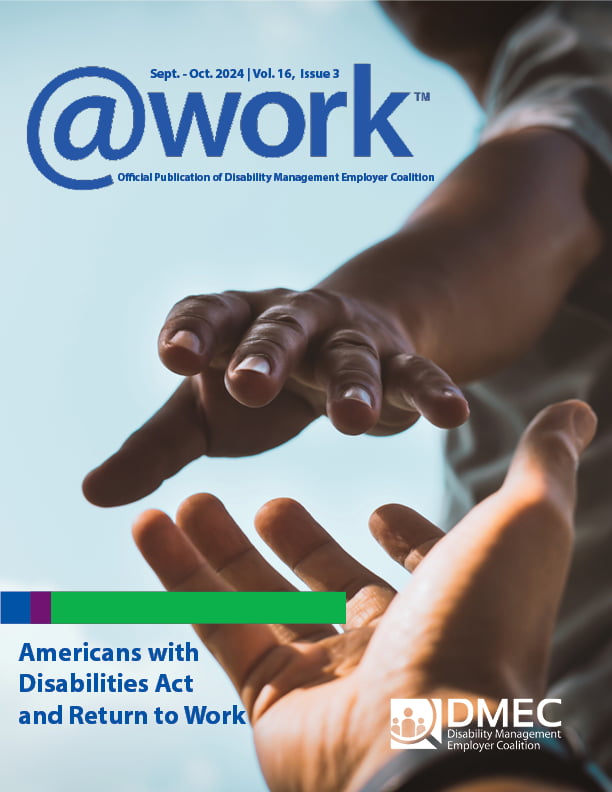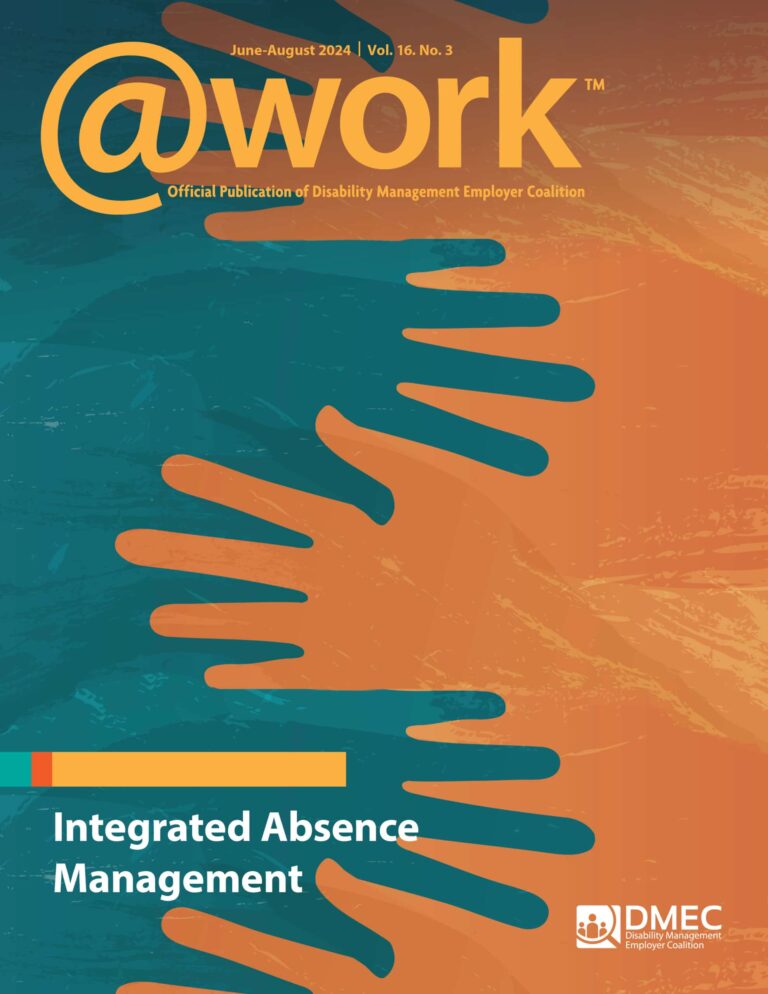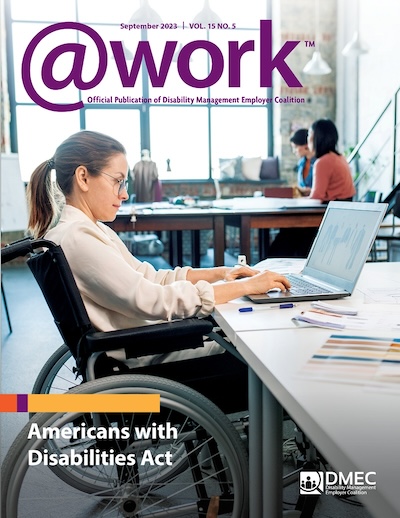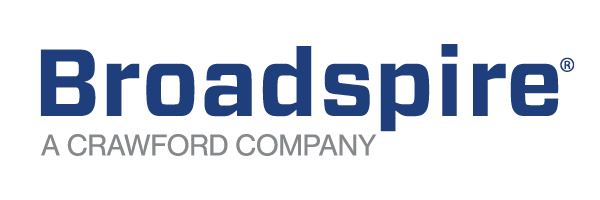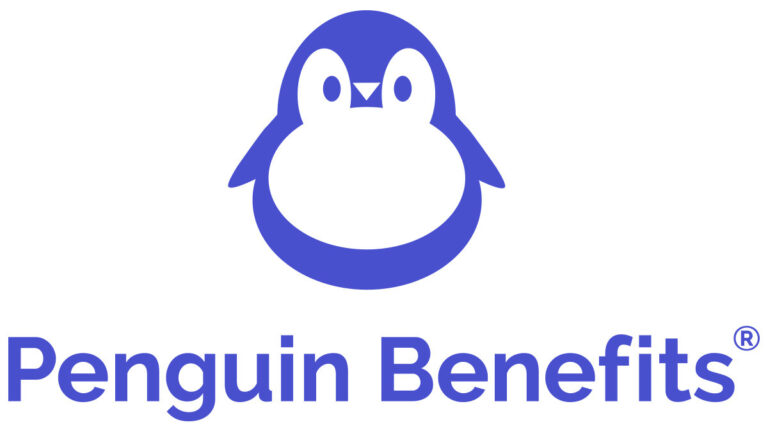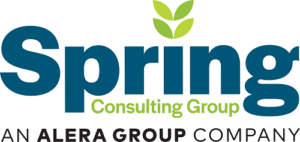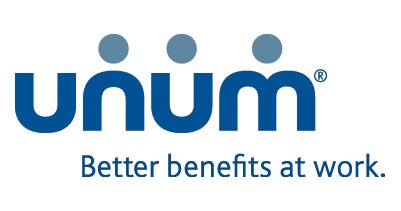2025 Integrated Disability and Absence Management Issue
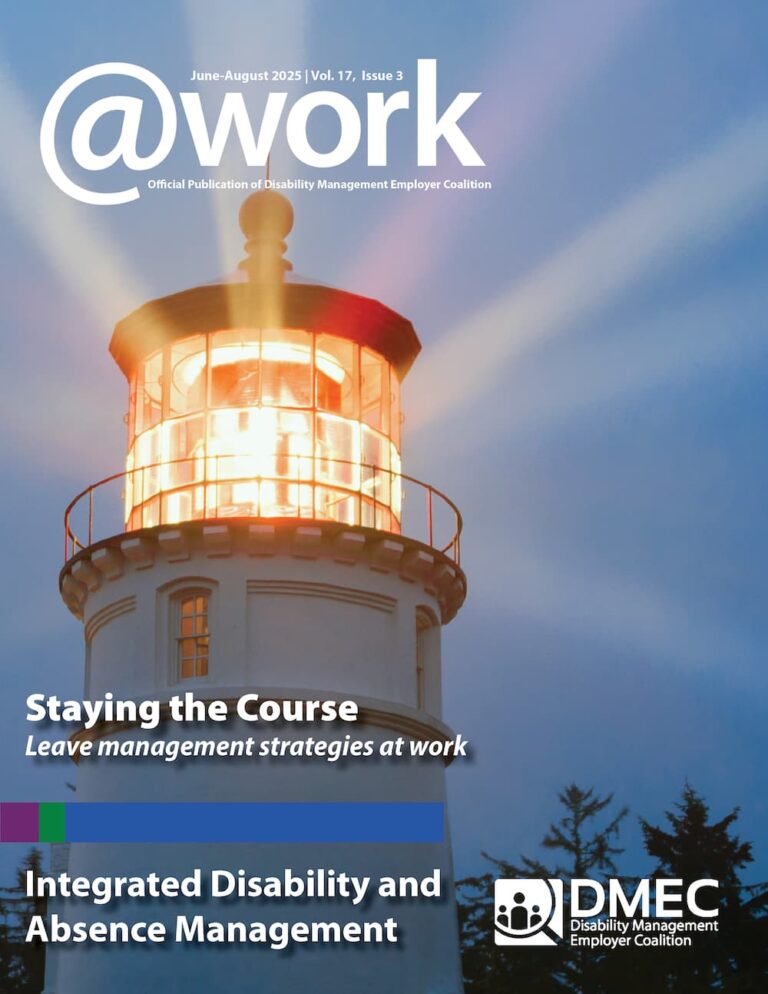
Integrating disability and absence management supports a seamless approach to helping employees stay at work and return to work as outlined in this issue of @Work magazine. Content illustrates the value of taking an integrated approach to this work — from offering holistic benefit plans that address financial, physical, and mental health aspects of employee health to recognizing (and communicating) the reality that work can be part of recovery. Learn more about why industry influences return-to-work durations, the true cost of taking a siloed approach to disability and absence management, and the best ways to minimize disruptions from intermittent leave. In today’s work environment, successful employers expect and encourage employees to use benefits and capitalize on generous plans that include leave. They act as guides to support the diverse needs of employees at different ages and stages of their lives and careers.


